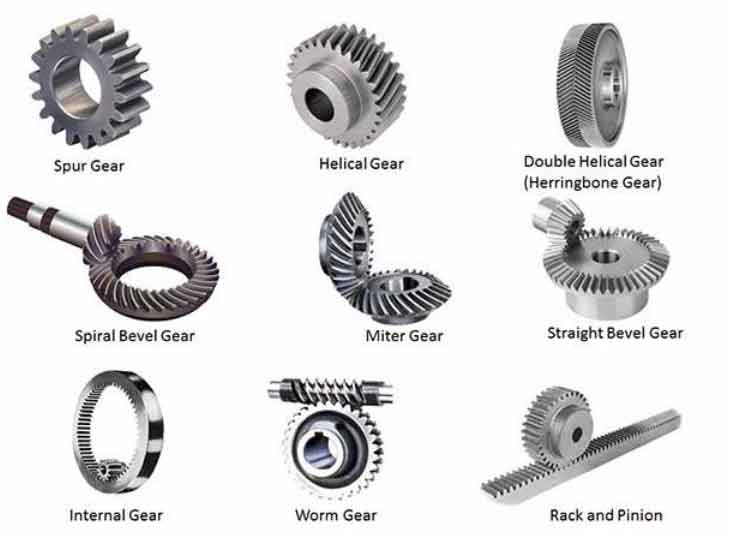
When deciding between helical gears and spur gears for your application, it’s important to consider the specific requirements and characteristics of each gear type. Let’s compare helical gears and spur gears to help you choose the right gear for your needs:
Helical Gears:
- Design: Helical gears have angled teeth that are cut in a helix shape around the gear. This helical tooth profile allows for gradual engagement, resulting in smoother and quieter operation compared to spur gears.
- Power Transmission: Helical gears provide efficient power transmission and precise speed control. They are suitable for applications that require high torque transmission, smooth operation, and the ability to transmit motion between parallel shafts.
- Load Capacity: Helical gears have a higher load-carrying capacity compared to spur gears due to the increased tooth engagement. The angled teeth distribute the load over a larger contact area, enabling them to handle heavier loads and transmit higher torque.
- Efficiency: Helical gears have slightly lower efficiency compared to spur gears due to the sliding contact between the angled teeth. However, advancements in helical gear design and manufacturing techniques have reduced the efficiency difference.
- Axial Thrust: Helical gears generate an axial thrust force due to the helix angle. This thrust force needs to be considered and managed using appropriate thrust bearings or gear design modifications.
Spur Gears:
- Design: Spur gears have straight teeth that are mounted on parallel shafts. They offer a simple and cost-effective design, making them widely available and compatible with standard components.
- Power Transmission: Spur gears provide efficient power transmission and precise speed control between parallel shafts. They are suitable for applications that require synchronized motion and where space is not a constraint.
- Load Capacity: Spur gears have a limited load-carrying capacity compared to helical gears. They are suitable for applications with moderate loads and torque requirements.
- Efficiency: Spur gears offer high efficiency in power transmission since they have rolling contact between teeth, resulting in minimal sliding friction.
- Noise and Vibration: Spur gears can generate noise and vibration, especially at high speeds, due to the sudden engagement of teeth. However, advancements in gear design and lubrication techniques can help minimize noise and vibration.
Choosing the Right Gear:
To determine the right gear for your needs, consider the following factors:
- Noise Considerations: If noise reduction is a critical factor, helical gears are generally preferred for their smoother and quieter operation compared to spur gears.
- Load Capacity and Torque Requirements: If your application involves heavy loads and high torque, helical gears are typically more suitable due to their higher load-carrying capacity.
- Efficiency Considerations: While spur gears have slightly higher efficiency, the efficiency difference between helical gears and spur gears has been reduced through improved helical gear design and manufacturing techniques. Evaluate the specific efficiency requirements and trade-offs for your application.
- Shaft Arrangement: If your application requires transmitting motion between parallel shafts, spur gears are typically the appropriate choice. Helical gears are suitable for applications that require parallel shafts and where smooth operation and high torque transmission are desired.
- Space Constraints: Spur gears provide a more compact design compared to helical gears, making them suitable for applications with space limitations.
It’s important to assess the specific requirements, load capacity, space constraints, noise considerations, efficiency needs, and other factors relevant to your application. Consulting with a mechanical engineer or gear specialist can provide further guidance based on your specific requirements.
